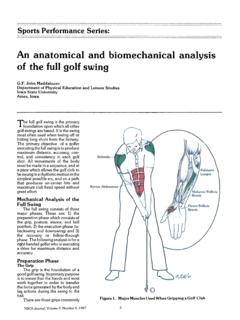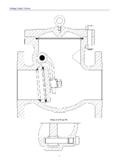Transcription of Swing Pricing - Alfi
1 GuidelinesSwing Pricingtable of contents3 Introduction, Terms of Reference and Key Principles Scope and terms of reference Key principles Benefits of Swing Pricing of Key Terms pros and cons of Swing Pricing Advantages Limitations Full versus partial Swing Pricing of the Swing Threshold and Swing Factor Determination of the Swing threshold Determination of the appropriate Swing factor & Transparency Governance Swing Pricing policy Periodic verification of the Swing factor and thresholds Transparency Official NAV Operational Considerations Capital activity Other operational issues to consider Recording the Swing factor
2 Fund mergers Contributions and redemptions in kind Launch of a new fund Launch of a new share class Liquidating funds Fund Structures Funds with a single share class Funds with multiple share classes Master feeder fund structures Fund of fund structures Pooling Summary Considerations Pricing and the impact on performance Risk assessment Competitor and peer performance analysis Fund performance reporting Internal fund performance reporting Performance fee calculations of contents5 Regulatory and Tax Considerations Financial reporting Swing errors Prospectus disclosure Articles of incorporation Key Investor Information Document German tax reporting an umbrella fund structure with multiple share classes, whilst capital activity is performed at the level of share classes, Swing Pricing is normally applied at the level of the fund for all share classes given that the portfolio of investments is managed at the level of the Pricing is part of the net asset value calcu-lation process and as such, it should be subject to an appropriate internal policy, governance and transparency as well as a strong control environ-ment.
3 There should be appropriate documenta-tion, particularly of any exceptions to the Swing Pricing the purpose of this document a sub-fund is referred to as a of Swing PricingSwing Pricing is applied for the ultimate benefit of fund investors by countering the dilution effect of investor activity. Studies have shown that investors ordinarily benefit from Swing Pricing in the long term as this process is designed to protect a fund from suffering the costs of invest-ment/disinvestment as a result of investor activ-ity. Funds that apply Swing Pricing show superior performance over time compared to funds (with identical investment strategies and trading pat-terns) that do not employ anti-dilution measures. Swing Pricing helps preserve investment returns. In addition Swing Pricing should act as a deterrent to short-term speculative investors as their investment will potentially need to have increased by more than twice the value of the Swing factor for any gain to be realised.
4 Investors that trade at a swung price are effectively paying the portfolio dealing costs and related impacts associated with their transaction. The method of applying Swing Pricing to the traded NAV price of funds is not applied for the benefit of fund agents or service providers, but solely to protect existing investors , terms of reference and key principlesThis is the third edition of the document that has been compiled by the ALFI working group. The group collated the revisions from a series of meetings with practitioners operating Swing Pricing and through a comprehensive survey of Luxembourg asset managers. This has resulted in a series of revisions and modifications to reaffirm key principles, to reflect evolution in working practice and to provide clarification on a number of technical points in areas such as calculation of the Swing factor, transparency and fund corporate actions.
5 This document is available in a PDF format on ALFI website: and terms of referenceThe primary purpose of this paper is to provide insight and guidance concerning Swing Pricing , with consideration as to its advantages, operation and limitations relevant to both those considering adoption of a Swing Pricing programme and also to established practitioners. It is not, however, within the terms of reference of the group to consider the pros and cons of Swing Pricing relative to other methods of dealing with dilution. Moreover, the working group has not been asked to recommend Swing Pricing , or any other method, as an industry standard. Equally there is no intention to mandate the compulsory use of Swing Pricing . Should an asset manager decide to implement Swing Pricing , the document intends to provide practical guidance relating to the key elements to be considered and to recom-mend standards of best practice as endorsed by principlesThe purpose of Swing Pricing is to provide reason-able protection to existing shareholders in a fund against the negative dilution impact occurring when a fund invests/disinvests in securities as a result of shareholder activity.
6 This is achieved by transferring the estimated impact arising to those shareholders Pricing fundA fund which calculates one single NAV per share which is used for all capital activity regardless of whether inflow or factorA Swing factor is the amount (normally expressed as a percentage) by which the NAV is adjusted in order to protect existing investors in a fund from dilution caused by securities trading following capital activity. The Swing factor is applied as a result of capital activity exceeding a pre-defined threshold (for partial Swing ) or any capital activity (for full Swing ). Swing thresholdThe level of net capital activity, expressed as a percentage of the NAV or an absolute monetary value, or both, required to trigger the swinging process where partial Swing Pricing is employed.
7 Factors influencing the determination of the Swing threshold are described in section Swing factor can also be referred to as impact adjustment. For consistency Swing factor will be used throughout this NAVThe Unswung NAV is the NAV without application of a Swing of key termsCapital activityNet value of subscription, redemption and switch orders received by the transfer agent for a single fund on any one trading reduction in value of a fund, and hence Net Asset Value (NAV) per share, that occurs as a result of capital activity dealt at a NAV that does not fully reflect the impact of investment/disin-vestment associated with security trades under-taken by the investment Priced FundA fund which calculates one price for subscribers, derived from underlying security offer prices, and another price for redeemers, derived from underlying security bid prices and in each case, potentially the related market swingThe NAV is adjusted each time there is capital activity, irrespective of its size or significance to the fund.
8 The direction of the Swing is determined by the net capital activity of the swingThe NAV is swung only when a predetermined net capital activity threshold (the Swing threshold) is exceeded at each dealing day. As with full Swing the direction of the Swing is determined by the net capital activity of the day. Partial Swing can also be referred to as semi- Swing Pricing . For con-sistency, partial Swing will be used throughout this to invest/disinvest the capital activity, or transaction charges, taxes, commissions or anything that would otherwise dilute the position of existing shareholders the potential market impact caused by securities trading or any potential liquidity discounts incurred by the fund upon selling greater the volume of investor activity in a fund, the more important the need for an effec-tive anti-dilution mechanism.
9 Swing Pricing looks to achieve reasonable protection at fund level, against dilution in value, in a single priced fund. It is not designed to address specific shareholder transactions, nor to provide 100% Pricing provides a mechanism to attribute the estimated cost of underlying capital activity to the active shareholders and thereby protect exist-ing investors from impacts caused by the capital activity of others. It is worth noting that whilst Swing Pricing is par-ticularly relevant to single-priced funds, dilution can also occur in a dual priced fund to the extent that the spread between the fund s bid and offer NAV does not reflect all the underlying costs of an investor subscribes into or redeems from a fund, that transaction is valued as at the fund s valuation the related cash proceeds are invested in/disinvested from underlying securities, the pur-chase or sales price of each underlying security may be at values different to those used in the valuation.
10 This is dilution and without an effective anti-dilution mechanism the financial impact is felt not by the subscriber/redeemer creating the dilu-tion, but by all existing fund shareholders. There are two main causes of dilution: timing and portfolio management are able to invest/dis-invest the relevant cash amount around the time of the fund valuation point, then an overall value similar to that in the NAV on which the investor deals, may be achieved and any potential dilution due to timing may be mitigated. However if i) portfolio management are unable to invest/disin-vest at that time, perhaps because cash forecasts of net subscriptions/redemption activity are unavailable or not possible at that time or ii) if the underlying securities markets are closed or illiquid at that time, then a dilution primarily due to timing can in value can occur because the single net asset value price at which investors buy and sell the fund s shares reflects only the value of its net assets.

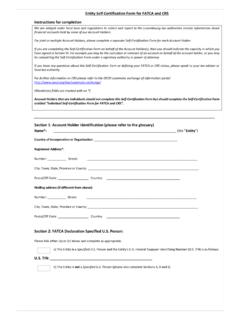



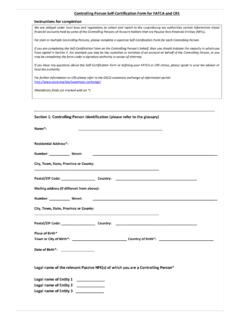

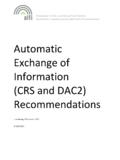

![Door Swing Chart [Converted] - Scherer Bros. …](/cache/preview/3/7/7/3/d/b/5/8/thumb-3773db587f72912a4075e2affe658fe9.jpg)

